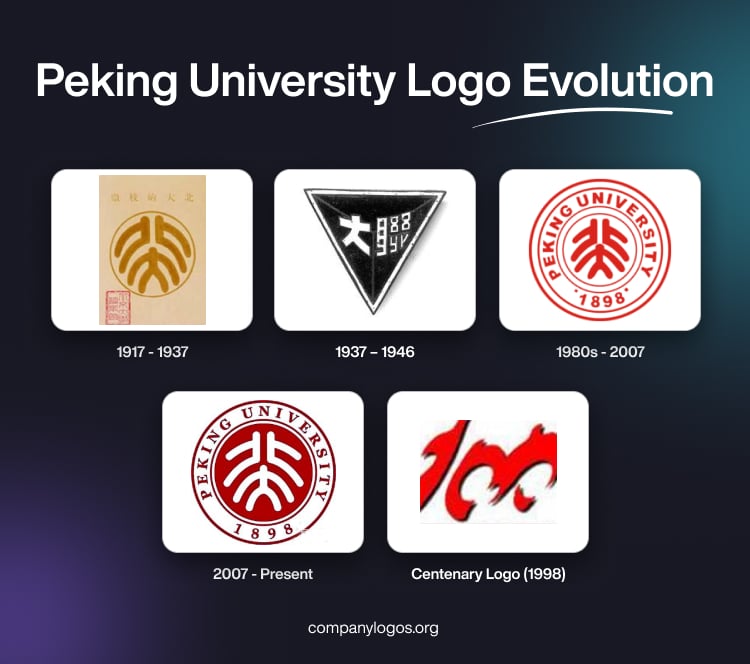
Peking University, or PKU, was founded in 1898 during the late Qing Dynasty as the Imperial Academy. It is the oldest and one of the most prestigious higher education institutions in China. The university is known for its rigorous research environment and hosts over 200 research institutes and national key laboratories. It has played a significant role in China’s intellectual and cultural development.
The university did not originally have a formal school emblem or logo. It was only in 1917 that a unique visual identity was designed for the institution. The logo evolution of Peking University shows how the social, economic, and political dynamics in China have shifted. The article explores the evolution of the Peking University logo, among other details.
The Genesis of the Peking University Logo (1917 – 1937)
The original Peking University (PKU) logo was designed in 1917 by the renowned writer and intellectual Lu Xun. This design featured two ancient Chinese seal characters stacked vertically. The characters were crafted in traditional seal script. The upper character, “北” (“Bei”), was stylised to resemble two human figures standing back-to-back.
The lower character, “大” (“Da”), on the other hand, was represented as a single figure. This arrangement visually represented the concept of “three people make a crowd” and symbolised PKU as a place of talent cultivation and social responsibility.
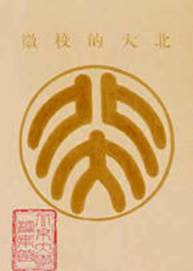
(1937 – 1946)
During the Second Sino-Japanese War, Peking University, along with Tsinghua University and Nankai University, had to relocate first to Changsha and then to Kunming to form the Southwest Associated University (SWAU). During this time, the universities adopted a temporary joint emblem. It was a logo of three triangles that symbolised unity and cooperation among the three institutions.
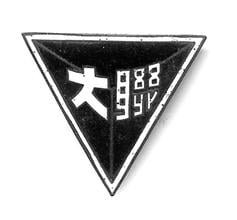
(1980s – 2007)
The Peking University logo ceased to be used after the founding of the People’s Republic of China. However, Lu Xun’s emblem made its return in the early 1980s, as PKU began to revisit its traditions. Some minor modifications were introduced to the old logo. These included adding the university’s English name and its founding year. Although several colour variants appeared, it was red that gradually became the dominant official colour.
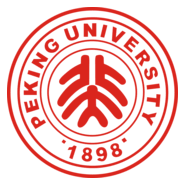
(2007 – Present)
The current logo was officially standardised in June 2007. It adheres closely to Lu Xun’s 1917 original logo but incorporates modern design conventions for clarity, reproducibility, and international recognition. The logo retained the “北大” seal script to emphasise tradition and historical continuity. It used a circular form for harmony and unity. PKU red was used as a standard colour for the logo.
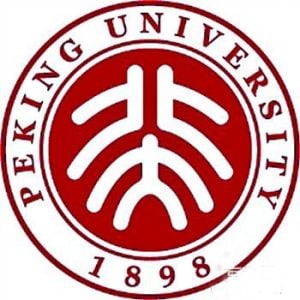
Centenary Logo (1998)
In 1998, a special logo was brought out to mark the centenary year of the university. Written in Chinese script, the logo employed red colour with brown shadows.

The Elements of the Peking University Logo
Font
The font used in designing the Peking University logo is based on ancient Chinese seal script. The characters used in the logo are crafted in a traditional seal-cutting style to symbolise historical continuity while also conveying modern aesthetics.
Colour
The official colour used in designing the Peking University logo is a specific red known as “Beida Red” or “PKU Red”. This red was standardised along with the university’s Visual Identity System in 2007. The red colour reflects tradition and vitality, and it is used to ensure a strong, unified visual identity for the university.
The History of Peking University
Peking University was founded in 1898 as the Imperial University of Peking, thereby marking the beginning of modern higher education in China. It also conveyed the replacement of the centuries-old feudal education system. Its establishment was a direct response to China’s defeat in the First Sino-Japanese War (1894–1895) and the subsequent push by reformers to modernise national education. The university initially served as both the country’s foremost institute for higher learning and as its supreme educational authority.
After the 1911 Xinhai Revolution, the university was renamed Peking University in 1912, and famed scholar Yan Fu became its first president under the modern system. He reformed the curriculum to introduce new disciplines and international academic standards.
Throughout the early 20th century, Peking University became a leading centre for intellectual and social change. It played a key role in the May Fourth Movement of 1919, when students led anti-imperialist and progressive protests that influenced modern Chinese society. Under the presidency of Cai Yuanpei (from 1917), the university became known for its academic freedom and for fostering new culture and democratic management.
The university continued to grow and reform and survived wars and political upheavals. In the early 1950s, it merged with Yenching University, which further strengthened its academic presence. In 2000, it merged with Beijing Medical University, which led to the broadening of its multidisciplinary reach.
Peking University is recognised as one of China’s most prestigious and selective institutions. It is known for its academic excellence, beautiful campus, significant research achievements, and its ongoing influence on Chinese politics, ideas, culture, and science.
Interesting Facts About Peking University, or PKU
- Peking University was founded in 1898 as the Imperial University of Peking. This made it the first modern national university established in China, which played a key role in modernising Chinese education.
- PKU has been at the centre of major intellectual and political movements. These include the May Fourth Movement in 1919, which pushed for modernisation and reform in Chinese culture and politics.
- Peking University consistently ranks among the top universities in Asia and the world. It is frequently featured in the Top 20 of the QS World University Rankings.
- While Peking University itself has not yet had a Nobel Laureate faculty, it has produced numerous alumni who went on to win Nobel Prizes. The names include Tu Youyou, who received the Nobel Prize in Physiology or Medicine in 2015 for her work on malaria treatment.
- PKU has established partnerships with many global universities, including Harvard, Stanford, Oxford, and Yale. It also hosts international students from over 100 countries.
- Located in Beijing’s Haidian District, the PKU campus is built on the site of a former Qing Dynasty imperial garden and is known for landmarks like Weiming Lake and traditional Chinese architecture.
- Unlike many universities that excel in either sciences or humanities, PKU is known for excellence in both, that is, from physics, chemistry, and medicine to philosophy, history, and literature.
- PKU houses the Institute of Chinese Studies and is a leader in Sinology (the study of Chinese language, literature, and civilisation). It also plays a vital role in promoting Mandarin Chinese education internationally.
- Some of China’s most prominent figures have studied or taught at PKU, such as Mao Zedong (worked in the library), Hu Shih (influential philosopher and essayist), and Li Dazhao (co-founder of the Chinese Communist Party).
- Peking University has become a major centre for artificial intelligence, big data, and biotechnology research and contributes significantly to the high-tech growth of China.
Finally
The evolution of the Peking University logo reflects the history of the university as well as the social, political, and intellectual shifts in modern China. It remains one of the most recognisable academic symbols in East Asia and is known for its deep symbolism, cultural resonance, and enduring legacy.